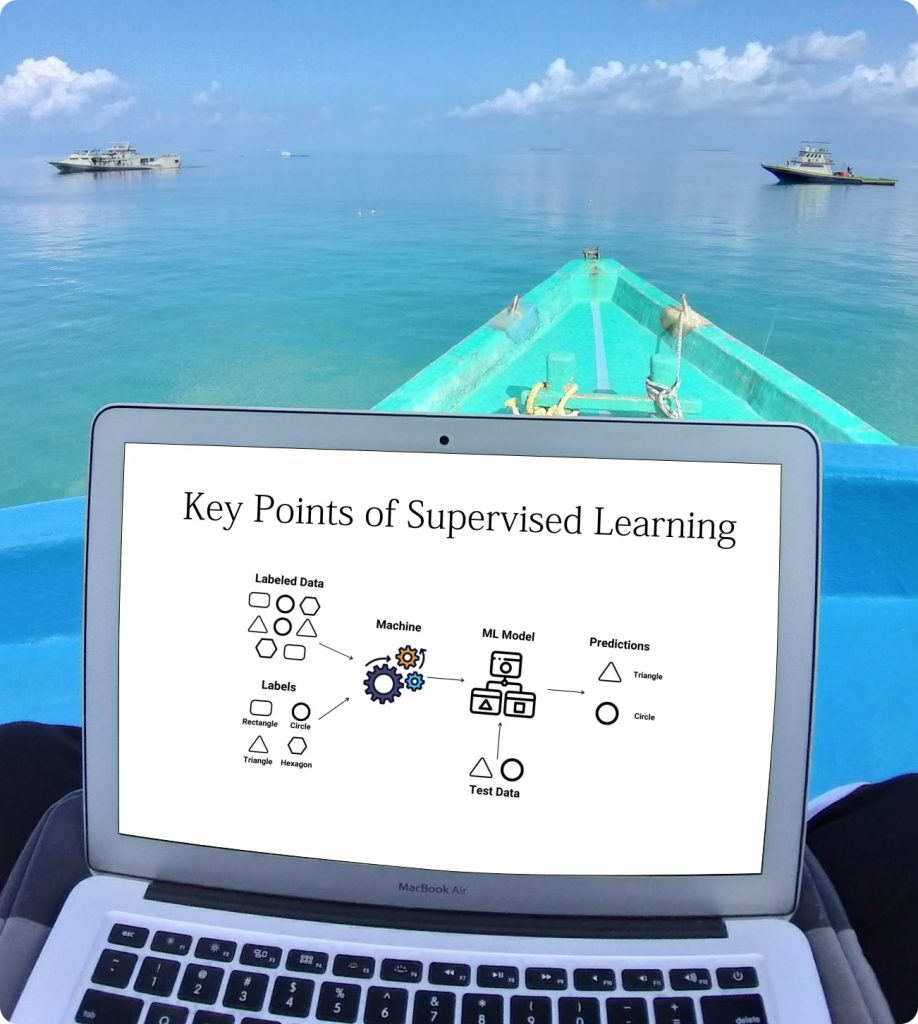For the first time ever I had opportunity to go for a multi-day fishing trip with a group of friends by a local fishing boat. This trip was 6 days long, spent roughly 100 hours in the middle of ocean, within the range of 20-50 nautical miles. This was totally a different experience in my life and during the trip I tried to learn something on supervised learning.
So let’s go…

- Supervised learning models learn from any given labeled data. They are known as training data.
- Training data contains different patterns.
- The algorithm will learn underlying patterns during the training process.
- In testing phase, training data set helps models to predict a desired outcome for unforeseen data.
Supervised Learning Algorithms
- k-Nearest Neighbors
- Linear Regression
- formula for linear regression, Y= ax+b
- Logistic Regression
- formula for logistic regression, y = ln(P/(1-P))
- Support Vector Machines (SVM)
- Decision Trees and Random Forests
- Neural Networks
Advantages of Supervised Learning
- Supervised learning is easy to understand.
- Number of classes or parameter will be known before model is deployed.
Challenges of Supervised Learning
- It requires some amount of expertise to structure accurately.
- Training a proper models can be very time intensive.
- Human errors in the datasets can cause poor algorithms.
- It cannot cluster or classify data on its own.
Supervised Learning Models Can Be Used in:
- Image and object recognition: Supervised learning algorithms can be used to identify objects in a videos or images.
- Predictive analytics: It provides deep insights into various business data points. Helps companies to take decisions more easily and accurately.
- Customer sentiment analysis: Easy to extract and classify important pieces of information from large volumes of data such as emotion, intent and context.
- Spam detection: Classification algorithms is used to recognize patterns or anomalies in a dataset.

